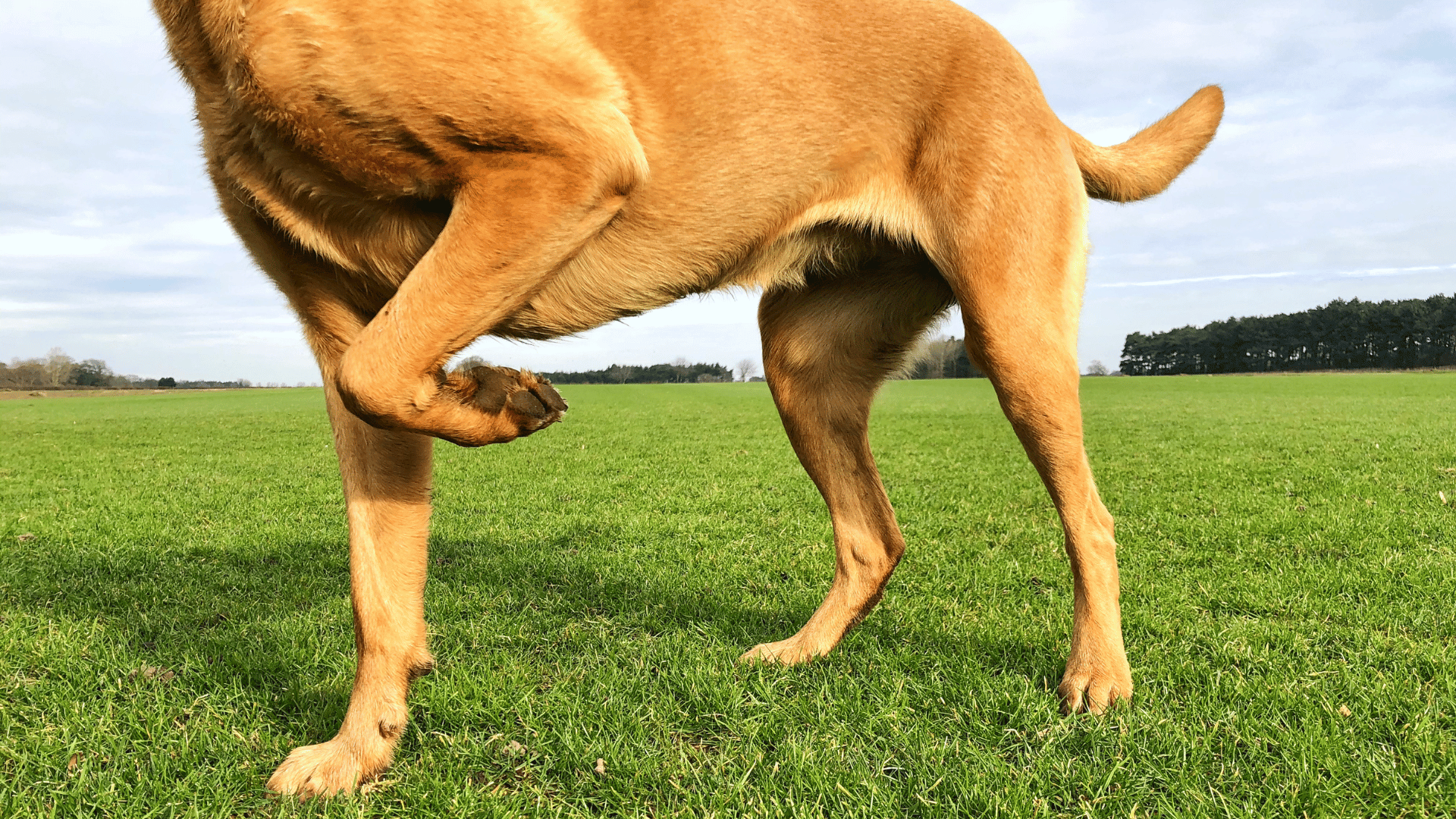It’s a sad thing to see your dog limping and having difficulty walking. It can be a sign of some health condition or discomfort that you may need to pay attention to immediately. Limping in pets may occur from multiple causes, like minor injuries (such as paw cuts) or serious health issues (such as hip dysplasia or arthritis).
It’s crucial to learn the underlying cause of walking difficulties or limping in your dog, to identify any serious health issues on time. You can discuss this with your veterinarian to diagnose the condition and plan appropriate treatment plans to prevent further complications. We will discuss the possible reason your dog may be limping and which treatment plan might help your furry friend recover its mobility.
4 Main Causes of Limping in Dogs
Try to learn why your dog may be limping. Here are some of the probable causes.
1. Injury-Related Limping
Your dog may have met some injury, which has affected its mobility. Some of these include:
- Strains and Sprains: Dogs may limp due to strains or sprains in the limbs. These injuries occur when ligaments, muscles, or tendons are torn or overstretched, usually while jumping or running.
- Ligament Injuries: Ligament injuries are common in dogs (especially among large breeds or active dogs) – the most common being an anterior cruciate ligament tear (ACL). The ACL helps maintain stability at the knee joint by connecting the shin and thighbones. If damage occurs to this ligament due to causes like intense physical activities, your furry pet may tear or overextend this ligament. Symptoms of ligament injuries include swelling around the knees, severe pain, and limping.
- Fractures: Fractures occur when one or more bones are partially or completely broken. These may occur due to severe trauma, such as road accidents or falls. Fractures may be as simple as the bone being cracked or broken cleanly, or complicated when the bone is broken into several fragments.
2. Paw and Foot Problems
Another common cause of limping in dogs is issues in the feet or paws of your furry companions, which may include the following.
- Paw Injuries, Abrasions, and Cuts: Dogs may get occasional cuts and abrasions in their paws and feet while walking or running on rough surfaces. These cuts and wounds may be painful, thus causing limping in dogs. If you notice that your pet is frequently licking its paws, it is a sign that it is facing pain or discomfort in and around its feet.
- Nail Issues: Dogs and other pets often have the issue of long and pointy nails, which are often harmful, leading to cuts and abrasions. Also, split or overgrown nails cause a dog to limp, especially when they have grown enough to form a curve that may poke into the paw pads. It may cause pain or even bleeding. Schedule your pet’s nail trimming sessions regularly to prevent these nail-related cuts and injuries.
3. Joint Problems
Joint issues are common among dogs, a major cause of limping in many canines. The three primary joint-related conditions commonly found in canine pets include:
- Arthritis: Arthritis is a condition in which joint inflammation is a common issue that results in swelling, chronic pain, and reduced mobility. Like humans, osteoarthritis is more common among middle- and old-aged dogs because, during this time, the cartilage present within the joints starts degrading and weakening due to continuous wear and tear.
- Hip Dysplasia: Hip dysplasia is another common health issue among dogs, specifically among large dog breeds, including Labrador Retrievers, German Shepherds, and Golden Retrievers. It is a genetic condition characterized by symptoms like difficulty jumping or arising from a resting position, prominent limping, or swaying. Your furry friend may also feel pain when someone touches their hip area or during physical activities.
- Luxating Patella: This condition is commonly termed a slipping kneecap (patella). It occurs when the kneecap is not aligned well and gets dislocated from its normal spot, that is, in the thigh bone’s groove. Luxating patella is common in small dog breeds, such as Miniature Poodles and Yorkshire Terriers. The common signs and symptoms of luxating patella are sudden hopping or skipping between runs, intermittent limping, and kneecap dislocation.
4. Diseases and Infections
Apart from injuries, joint problems, or paw issues, a dog may limp because of some underlying health condition.
- Osteomyelitis: It is a kind of bone infection that has a significant impact on the bones. Osteomyelitis is often caused by bacteria accumulation or fungal infections. This condition may occur from direct contamination or infection in an untreated wound, which may start spreading from one site to another.
- Lyme Disease: Lyme disease is a tick-borne disease characterized by limping, fever, swollen lymph nodes, and lethargy among dogs. Dogs suffering from Lyme-induced arthritis may show shifting lameness or sudden discomfort in one or more joints.

Treatment Plans to Address Limping in Dogs
For starters, you can provide the initial care and treatment whenever you feel something is wrong with your pet’s paws, hip bones, feet, or hind legs. While allowing your pet to rest, you may also reduce movement to allow time for the pain or inflamed area to heal.
To relieve or minimize pain and discomfort, veterinarians or pet specialists may prescribe you medicines, like anti-inflammatory drugs and pain relievers. Following the common treatment options to help reduce this limping and movement problems, thus improving mobility.
- Physical therapy
- Rehabilitation
- Tailored exercises
- Medication
Best Ways You Can Prevent Limping in Dogs
You can prevent hind leg weakness and frequent limps in your pet, thus improving its quality of life. Some of them include:
- Regular checkups by your veterinary doctor to diagnose and determine any probable conditions on time
- Following a well-balanced diet that is rich in vital nutrients that support joint and bone health
- Trim your dog’s nails occasionally to prevent cuts and abrasions from nails
- Involve in regular exercise and some sort of physical activity, and it can be as simple as walking or stepping out.
A veterinarian may use a combination of these treatment plans, custom-made to the dog’s unique needs and health conditions.
Key Takeaways
We hope the article helped you decide the best ways to diagnose and address your dog’s limbs. The above treatment plans are effective in controlling and managing health conditions while addressing issues like weight management, minimizing joint stress, etc. Your dog deserves to live a better quality of life, so pet owners should work on it. So, they may have dreamed of being in a peaceful family, which will boost the dog’s physical and mental stability.






